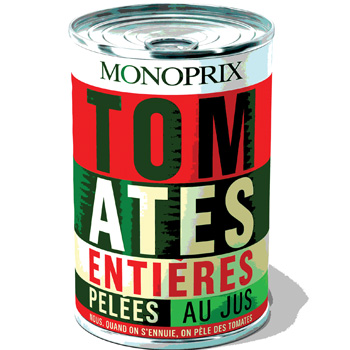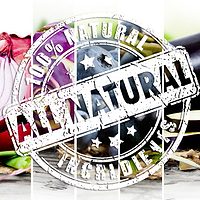It’s What’s on the Outside that Counts

The European Food Safety Authority, which sets out the legal requirements on food safety and hygiene, has recently made changes calling for the standardization of information displayed on product packaging. The challenge now for the food and beverage industry is to meet the demands of consumers for more information on the products they consume and, at the same time, manage an ever-greater range of product specifications.
Monoprix is one of the largest retailers in Europe; we are responsible for managing over 80,000 existing products throughout our stores. Product specifications now need a high level of detail, including information on potential allergens, not to mention whether they contain genetically modified organisms, or are fair trade, palm oil-free or organically sourced. This introduces more work into the packaging process and calls for more transparency of information between parties. To achieve this, we need to have the right tools to manage all the information on our products while retaining the ability to easily store and retrieve information for faster and more efficient product recalls.
A Brief History of Packaging
Traditionally, the packaging process has relied on Excel, image files or in-house software systems. To put this in a greater perspective, a quality manager in charge of a private label portfolio can expect to manage an average of 400–450 products, whose specifications are reviewed annually. Problems have often emerged from managing information poorly, which can lead to an unnecessary amount of duplication. Furthermore, listing specifications repeatedly increases the risk of error and wastes valuable time and resources. With these challenges, the role of the quality department is increasing in complexity and cannot afford to be burdened with administration within a shrinking time frame imposed by the product launch schedule.
Thinking Outside the Box
In this competitive market, retailers are being called upon to deliver new products to market as soon as possible, while complying with various industry standards on product information. There are thousands of private label products offered to consumers, and it is becoming ever more important for us to distinguish ourselves from the competition with innovative products. Monoprix wanted to better reflect our focus on delivering a positive customer ex-perience in our physical stores. As such, we decided to completely redesign our standard own-brand “M” packaging with inspiration from the pop art of Andy Warhol. With the concept achieved, the next step was to coordinate multiple departments and external partners to execute the plan. This required drawing on efforts from a variety of sources, including creative agencies, product quality departments, printers, manufacturers and designers, who did not all necessarily live in the same country or speak the same language. To make the process coherent and to deliver the final product quickly, we needed to improve the communication and collaboration between the parties involved.
A Packaged Solution
To undertake this project, we used a private label software specialist whose packaging portal allowed coordination of the packaging process from the design right through to implementation. The first step of the process was created through the artwork portal, a collaborative project management tool. This let us manage the development of the artwork and facing used on the packaging through to the final print phase, and stores all the images and specifications used for the product in an online library. This means that all materials are easily accessible, and the portal features a web-proofing functionality that automatically detects mistakes, making for rapid corrections.
Private Workspace in the Public Cloud
The portal let our teams work on the packaging and make changes simultaneously, helping us move through the process quickly. The portal creates a private workspace for each party online, so that they have control only over the parts of the process they’re responsible for. This feature is important to us from a security perspective and prevents users making changes to others’ work. Because this information is immediately available, we find that this makes managing multiple product lines more efficient. Furthermore, in the event a mistake is made and a product must be recalled, the portal helps us track these products quickly using their specifications. Because the information is electronically stored, we can easily reuse existing specifications to create entirely new products in the future.
An important feature of how the packaging portal works is that each stage of the process must be validated by all parties using digital signatures. As authorizations are made instantly online, this attribute reduced the time everyone spent writing e-mails or making phone calls. The only time that we or our partners had to pick up the phone was if we didn’t agree to sign off on a particular stage of the process. Once the details were clarified over the phone, the section could then immediately be validated online. As with the undertaking of any large project, it was important that those responsible for each part of the process remained accountable for their work. Because the information is stored electronically and is always available, we can quickly identify mistakes and spend less time finding the root cause of the problem and more time solving it. This helps improve collaboration and further reduces the risk of incorrect information finding its way to the end product with the consumer.
The packaging portal helped streamline the process and bring together workers with very different responsibilities and briefs onto the same management platform. The time we saved in administration and approval allowed the printers, designers and subcontractors to deliver their work effectively, and we could quickly proceed to the next stage in the development cycle. This process allowed us to redevelop packaging across more products much faster than we would using paper records. We successfully applied changes to over 20,000 products throughout both our food and nonfood product ranges over the course of 3 years.
Using software as a service (SaaS) for our packaging process dramatically reduced both the cost and time associated with managing specifications across our M label product range. We were also able to improve our ongoing efficiency and develop our working relationships with third parties and external agencies. While improved collaboration has helped us deliver an entirely new range of product packaging and reduce the time of these products to market, the software could help facilitate effective product recalls in the future when needed.
Effective Management of Product Recalls
Incorrect information displayed on packaging is not only a problem in terms of confusing customers, it is also a violation of the law and the industry standards with which we as retailers must comply. While we make every effort to prevent mistakes being made in the first place, one incorrect piece of packaging information, like a wrong expiration date, can cause a significant problem. Once the product has been sent to print, not much can be done to stop it making its way to consumers until we are made aware of the mistake. What we can then do is quickly prevent further mislabeled products from reaching the shelves and swiftly deal with those that have been affected by recalling them.
To make this process as effective as possible, we must have the right information at our disposal and be able to access it readily. Since the packaging specifications in the previous process are stored electronically, we can quickly see which products have been affected and implement a recall. The industry as a whole needs to realize these benefits to minimize the risk of product recalls, as the news of a product recall can damage the reputation of the whole industry as well as the specific retailer concerned. We must now demonstrate that we in the food and beverage industry have done everything in our power to protect the consumer by faster product recalls in hours, not days.
New Approaches Needed
We are now under greater pressure to reduce costs and earn higher margins while delivering a wider portfolio of products that engage consumers in new ways. In this process, we cannot afford to risk avoidable packaging mistakes that damage reputations, violate our industry standards and ultimately put consumers at risk. SaaS in the food industry has proven itself fit to manage these different demands, reducing the chance of error without stifling the creative process.
The food and beverage industry must ensure that it is innovative in the products it designs as well as in the ways it reduces risks and deals with product recalls. Our individual reputations stand together; product recalls from poorly managed packaging have the potential to damage the view of the industry as a whole, something none of us can afford in these challenging economic times.
France-based Monoprix is a leading European retailer of food and general merchandise, with more than 300 stores.
Looking for a reprint of this article?
From high-res PDFs to custom plaques, order your copy today!





